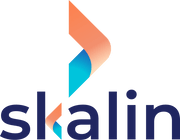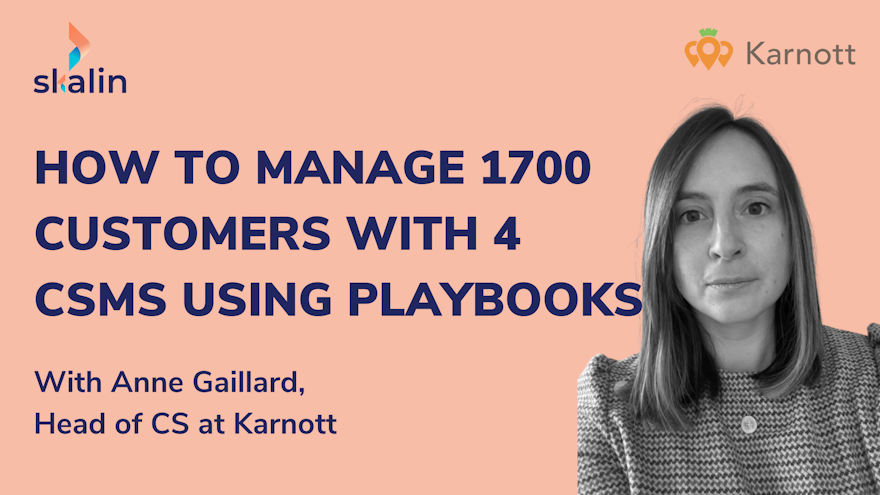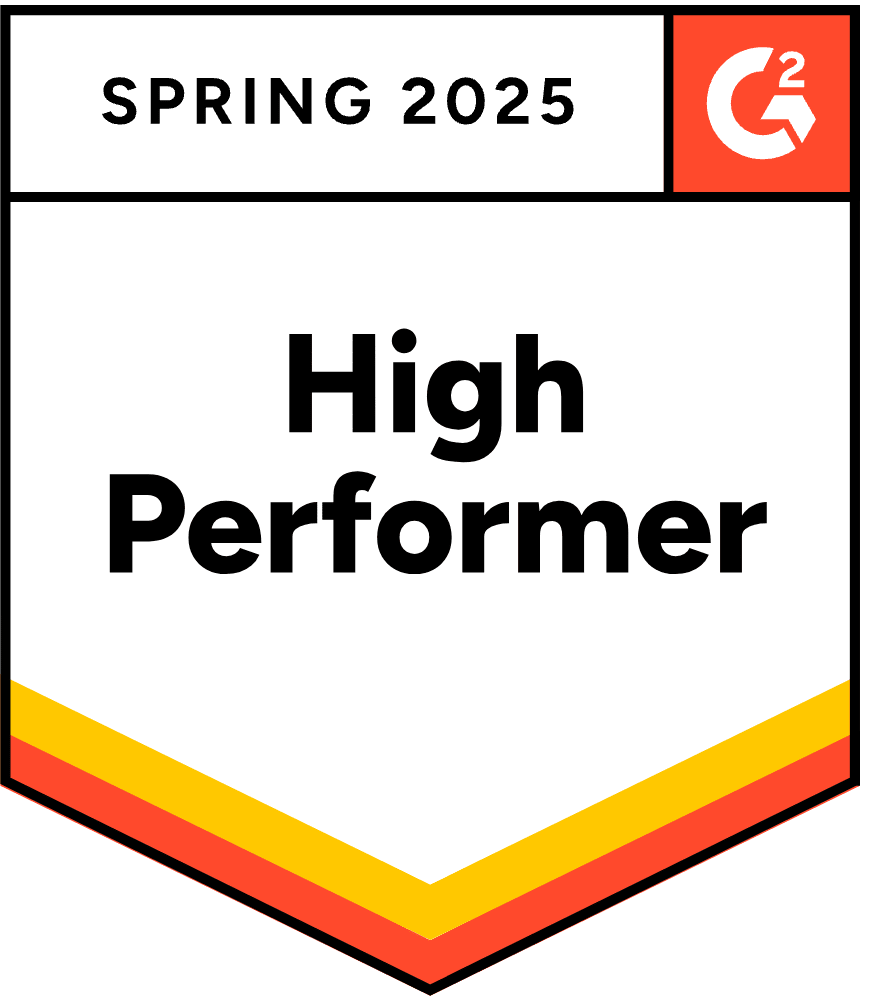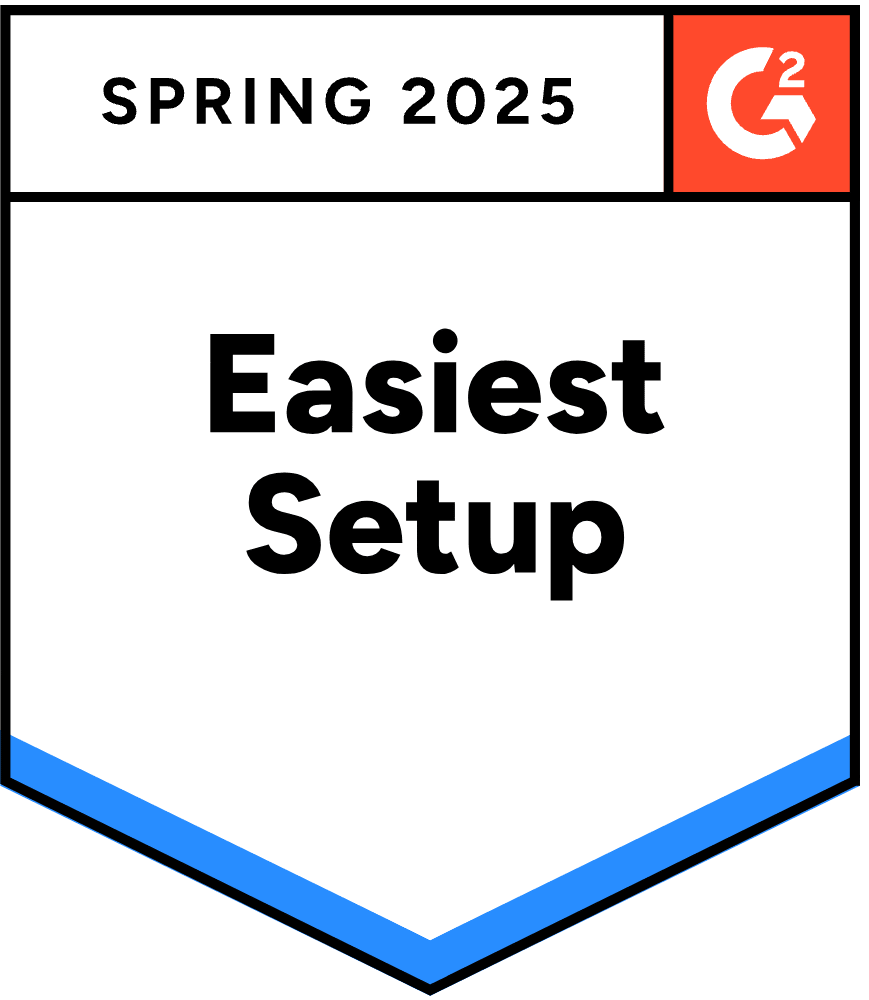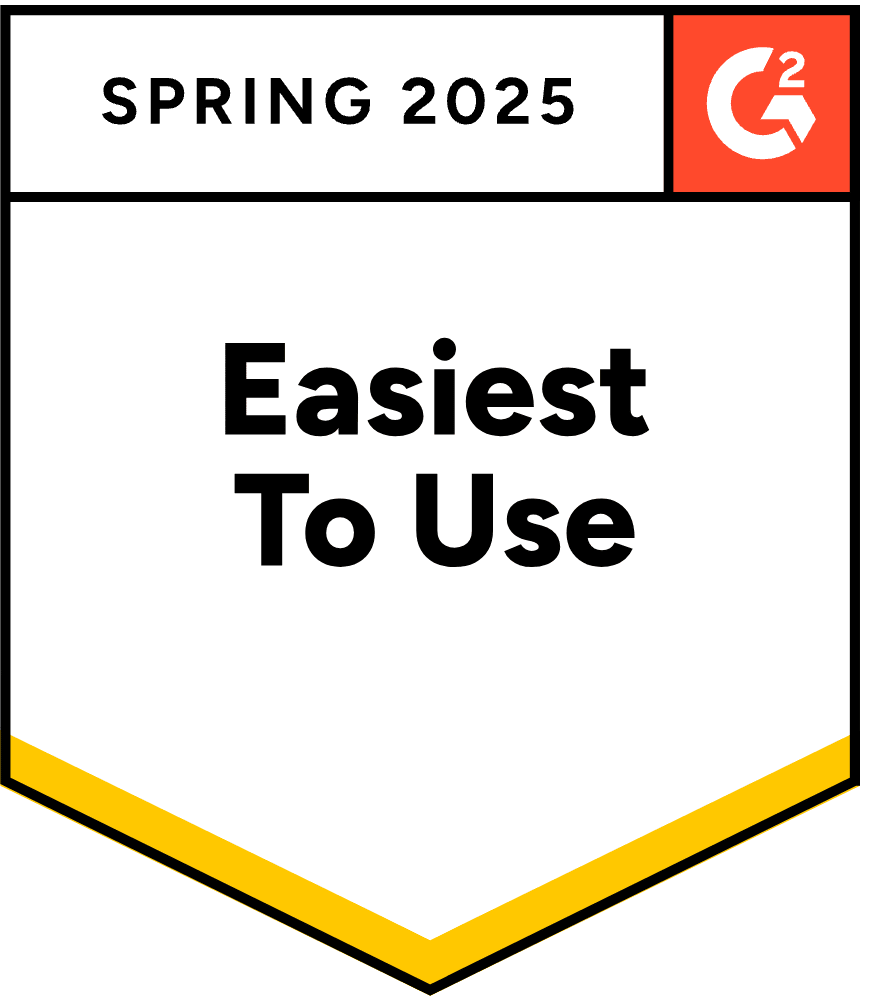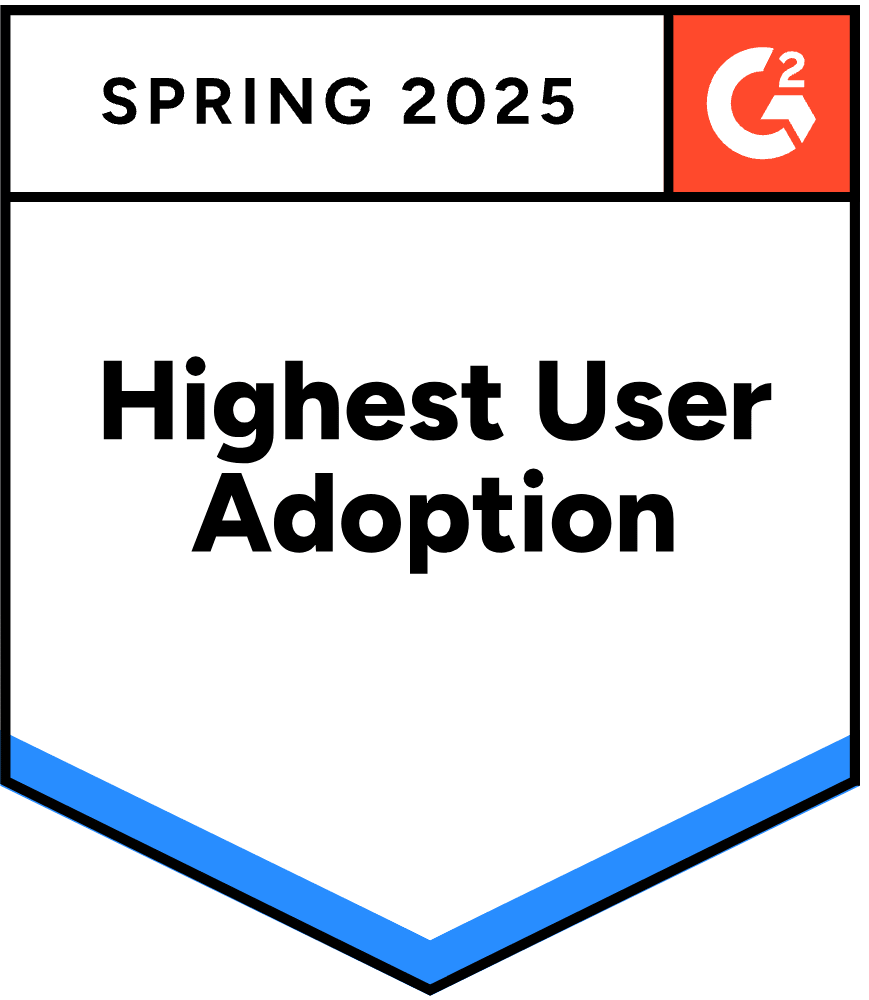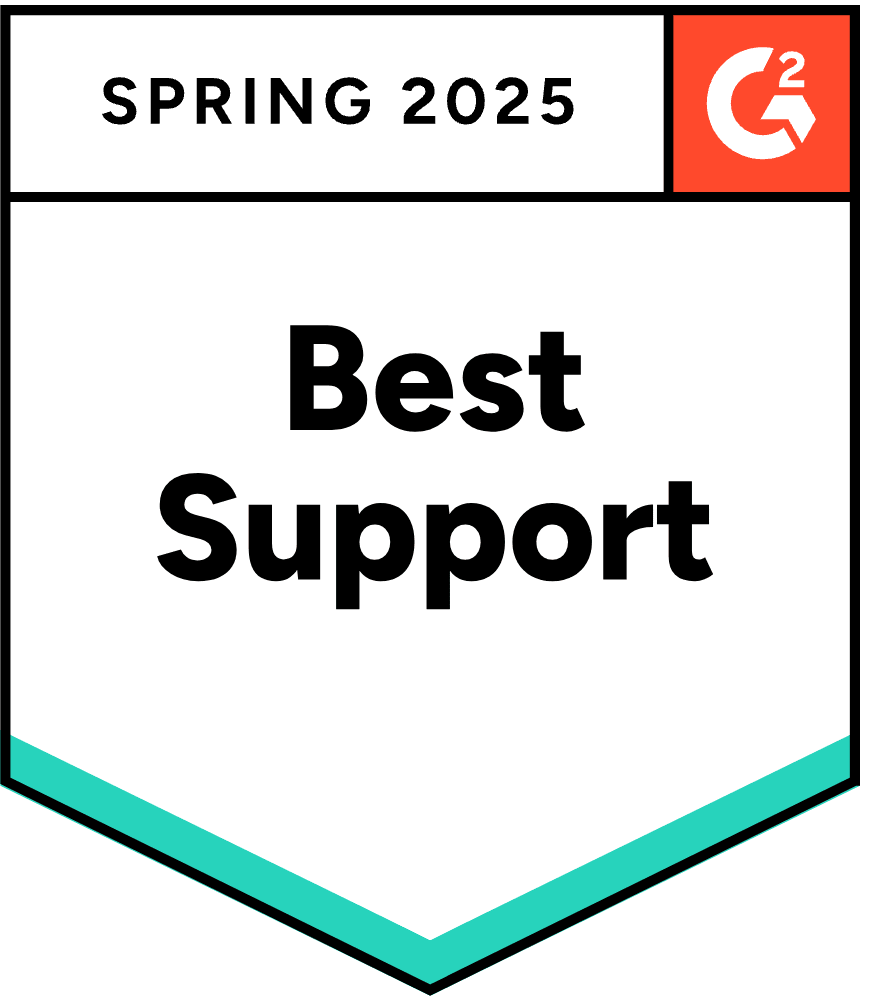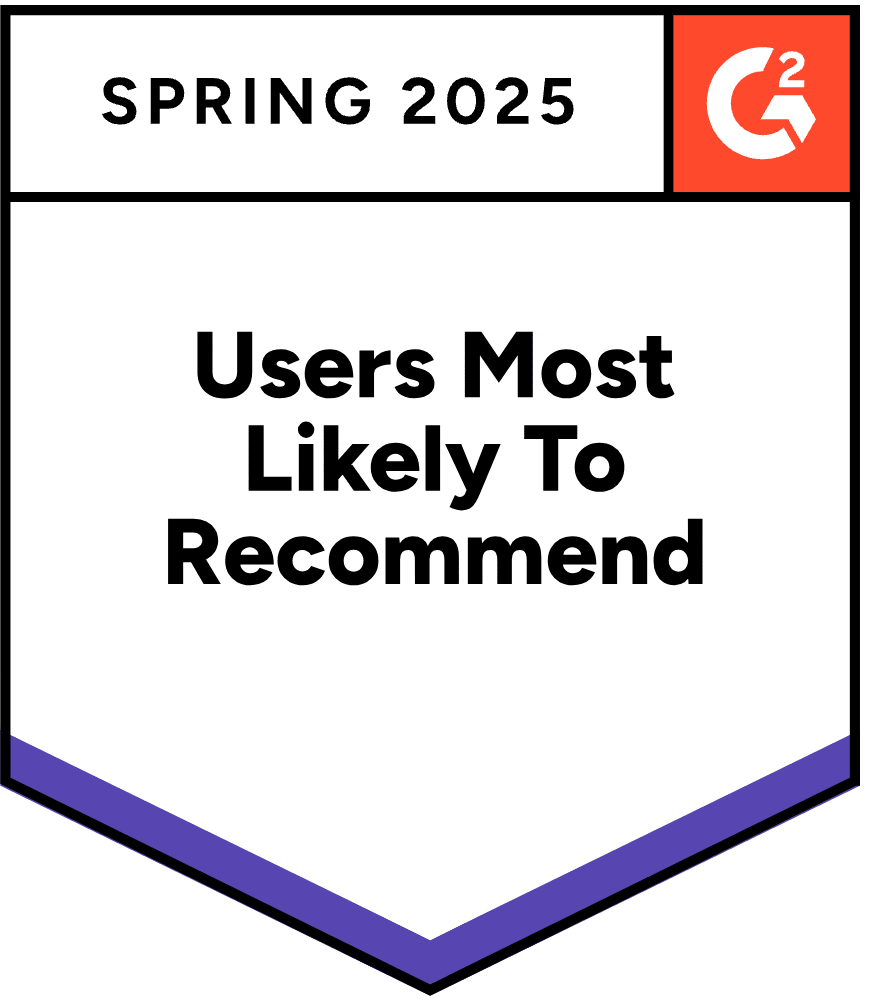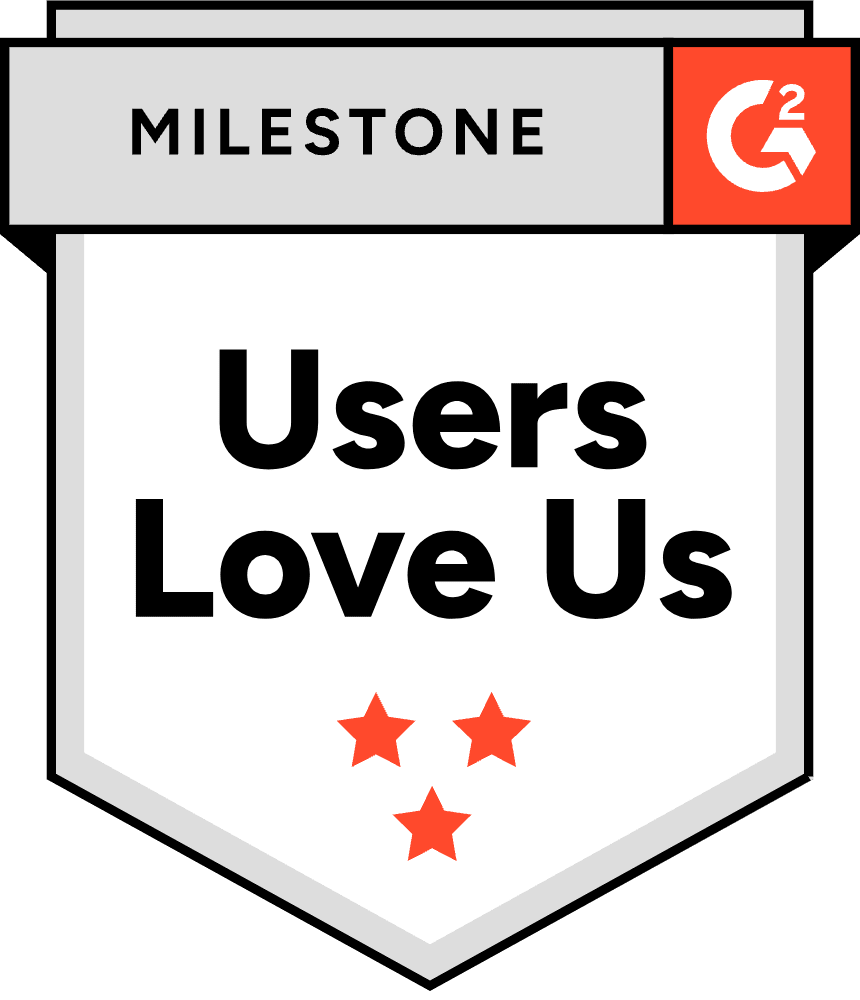+150% of customers in 3 years and an increase in the CSM team of by only 25%, this requires ultra-optimised processes in which Playbooks play a central role. Here is Anne's feedback, Head of Customer Success at Karnott.
Can you introduce us to Karnott and your role in the company?
Karnott is a solution that allows automated monitoring of agricultural and viticultural work. Our users can optimise the use of their equipment in real-time and control their interventions.
I joined just over 4 years ago , as Customer Success Manager. At that time, we had about 150 customers and I was responsible for managing support, orders, invoicing, onboarding and after-sales all with only one person. Determined to bring order, our two founders suggested creating the Customer Success department. We welcomed 3 new CSMs leading to a period of structuring, implementing new tools, data qualification and providing support.
We have grown from 700 clients at the end of 2019 to 1700 clients today, and we have expanded the team by a fourth CSM in September 2020.
With such a large client base I imagine that portfolio segmentation quickly became a concern. How did you approach this?
Initially our sales force was divided into geographical areas, so we segmented the portofolio based on this division. Each CSM was responsible for several departments, cover all customers types. While this segmentation worked well, it was not optimal in terms of quantity and added value.
Recognizing the need for a more nuanced approach, a few months ago, we rethought the segmentation with a focus on several dimensions after the onboarding :
- Type of customer
- Number of facilities
- MRR
- Upsell and cross-sell potential
- Level of involvement
How did you structure the team based on this segmentation?
Last summer marked a period of acceleration, particularly with the desire to change our pricing system, by offering three formulas (and therefore three types of support) and the decision to specialise in CSM.
It's important to note that at Karnott, seasonality is quite prounouced, our clientele operates 24/7, and our solution is dependent on hardware (the equipment is equipped with connected meters that require precise positioning). The onboarding phase is therefore essential, albeit sometimes lengthy. Additionally, we cater to a diverse range of customers, from large industrial companies to small farmers, each requiring a different level of investment (a subtle mix of low touch, mid touch, and high touch). Managing all these aspects, we strive to find the most optimal and scalable organization without the need for additional hiring.
We have therefore chosen to have :
- A CSM specializing in onboarding, for new clients, excluding major accounts;
- Two CSM in charge of adoption and expansion dividing customers by typologies, except for large accounts;
- A CSM specialist for key accounts handling onboarding and collecting customer feedback for the product team.
This model helped us redefine our Customer Journey, and create increasingly personalized customer journeys.
When did you realize the need to automate your customer journeys?
Quite early on. We work with a clientele that is not always readily available. It's not easy to reach them by phone, or at least not during our working hours. The weather factor also plays a significant role, and no one can control that! So it's up to us to adapt and offer different types of support, not limited to the telephone channel.
We needed to offer support through various channels without overwhelming them with calls. The realisation led us to digitalize the process, which took about six months to become effective.
Simultaneously, we grapple with the challenge of quantity. It's impractical to call everyone all the time, especially when managing 600 clients independently while aiming to provide quality support. We had to break away from the habits of the beginning, demonstrating that support can be just as qualitative via other channels (given that historically, all onboarding was done by telephone). We identified the stages where CSM adds value and initiated the process of digitalization.
To be more concrete, even if you become aware of the need to automate quickly, implementation cannot happen overnight. A sufficiently clear basic path is necessary, and most importantly, data to exploit. Without customer data, there is limited capacity for action. It is at this point that one can contemplate the creation of automated paths. The initial ones became effective approximately six months after the service was launched.
What are your main levers for automating customer journeys?
The introduction of a Customer Success Platform, alongside our CRM, provide us a 360° view of our customers, both in raw and behavioural data. You are no longer just reactive, you become proactive!
The tool thinks for you, and once everything is set up right, it's powerful!
The platform allowed us to leverage Playbooks in 4 ways:
- Automated email sequences: tailored to the customer lifecycle
- Feedback automation (new customers, feedback, promoters...)
- Task automation (new onboarding, assessment...) linked to the customer's life cycle
- Alert automation (new upsell opportunities, poor health, etc.): based on detected behaviours.
We currently have around 80 active playbooks, emphasizing personalized courses triggered at opportune moments to avoid overkill and maintain prioritization.
Sometimes Playbooks can feel impersonal. How do you address that?
I'm repeating myself, but the work on data is essential. The more information we have about our customers, the more personalized our automatic communications can become, erasing this impersonal effect. This is what allows us to create personalized paths according to the type of customer, their plan, their activity, their life cycle, their behavior, their role within the structure...
To avoid this "robot" effect, several things have been put in place:
Each email is written as if the coach is the one writing it, introducing oneself, using "I", signing with your business phone, adopting a tone that is not too formal, and using a few emojis (we really like emojis in my team 😃)
We always offer several training schemes to demonstrate our adaptability to the daily life and the fast pace of our clients' work. We provide them with choices : encouraging autonomous training by making the right resources available at the right time, offering group training slots to benefit from the experience of other users, andalways making ourselves available for individualized training
We also aim to make our clients as responsible as possible. We avoid being too insistent and "bombarding" them with emails, opting for a concrete and straightforward approach.
In recent months, we introduced video content for training tutorials and tips, making onabording more qualitative and engaging.
The significant improvement in recent months is the introduction of video content. We offer both training tutorials and "tips" videos on specific points. The return on investment has been very fast: the number of autonomous training courses has exploded, the onboarding is more qualitative, the clients can quickly dive into the heart of the web and mobile applications, and we have fun shooting these videos!
I have simply became a fan of Loom (you can add your head in a bubble while filming your screen, allowing you to put a face on a voice) and PlayPlay, which allows professional and fun editing.
What is the process for defining a new pathway before industrializing and how do you improve existing ones ?
You have to experiment! And don't just rely on your intuitions or convictions. As sometimes certainties can prove to be quite different in reality. For instance, the common belief that farmers do not read their emails is contradicted by our observed opening rates. We hesitated for a long time before offering webinars, anticipating low subscriber numbers, but, in the end, we have cultivated a loyal following, and the interaxtions are remarkable !
In addition to experimenting, measurement is essential. The tools at our disposal provide advanced analyses, and it's crucial to use them judiciously. And above all, patience is key. Sometimes, conclusions are drawn too quickly. Given the strong influence of seasonality and the lack of availability of our clients at certain times, we understand the necessity to allow these "strategies" time to unfold.
To complete the picture, direct client feedback is vital. Though obtaining isn't always easy, we leverage telephone meetings to gauge sentiments on specific subjects. Feedback from our sales force in the field also contributes significantly.
On a more personal note, I engage in extensive monitoring through blog articles (Skalin's are great !), podcasts, LinkedIn, and exchanges with peers. I enjoy exploring what is done elsewhere, testing it and adapting successful strategies to our activities. If it works, great. If not, we readjust!
All these levers are primarily external to your platform. Have you also deployed solutions to support your users within your product?
Absolutely! We are striving to enhance interactions with our users within the product, as the impact is inevitably quicker than through an email, ensuring the customer does not miss crucial information.
Depending on the message we want to convey, we have deployed various levers:
- Product Tour: Guides customers through the configuration of their account or the discovery of a new feature. While practical, we've observed a high drop-out rate. Therefore, we are now placing more emphasis on video tutorials.
- Banners: Useful for short information such as maintenance, new webinars, podcasts, or promotional offers.
- Posts: Useful pop-ups for information that requires a bit more detail.
- The Mobile Carousel: Tutorials for the mobile application that are highly interactive and well-received.
We use Intercom for implementation, offering the advantage of autonomy in deployment, allowing clients to react with emojis, and providing tools to measure effectiveness. Additionally, our excellent product team integrates FAQ links strategically to further enhance the user experience!
